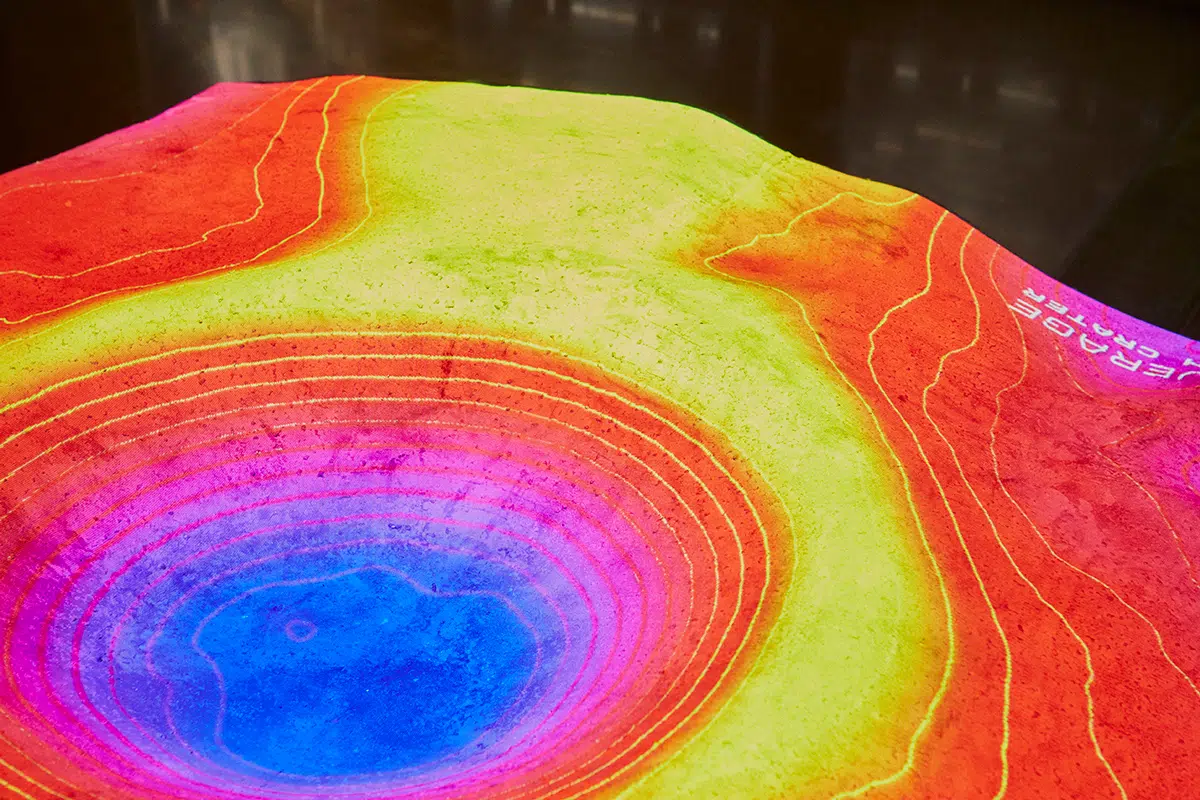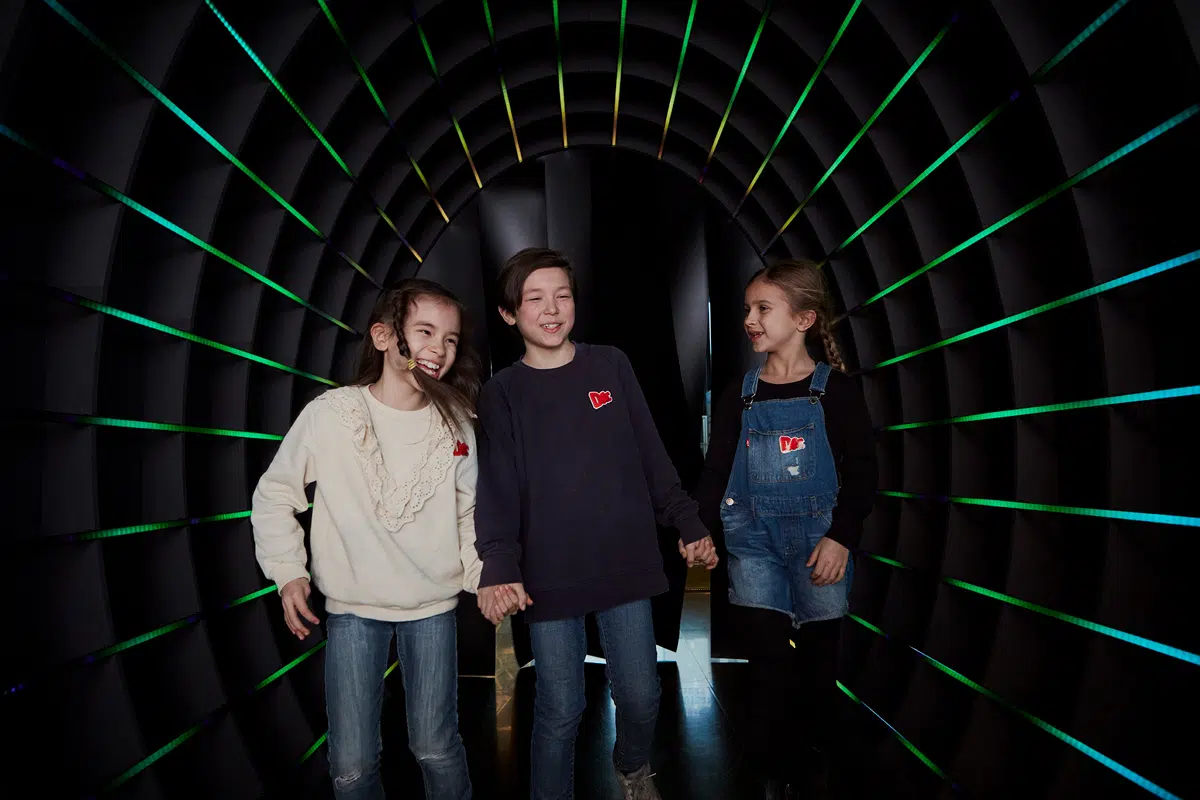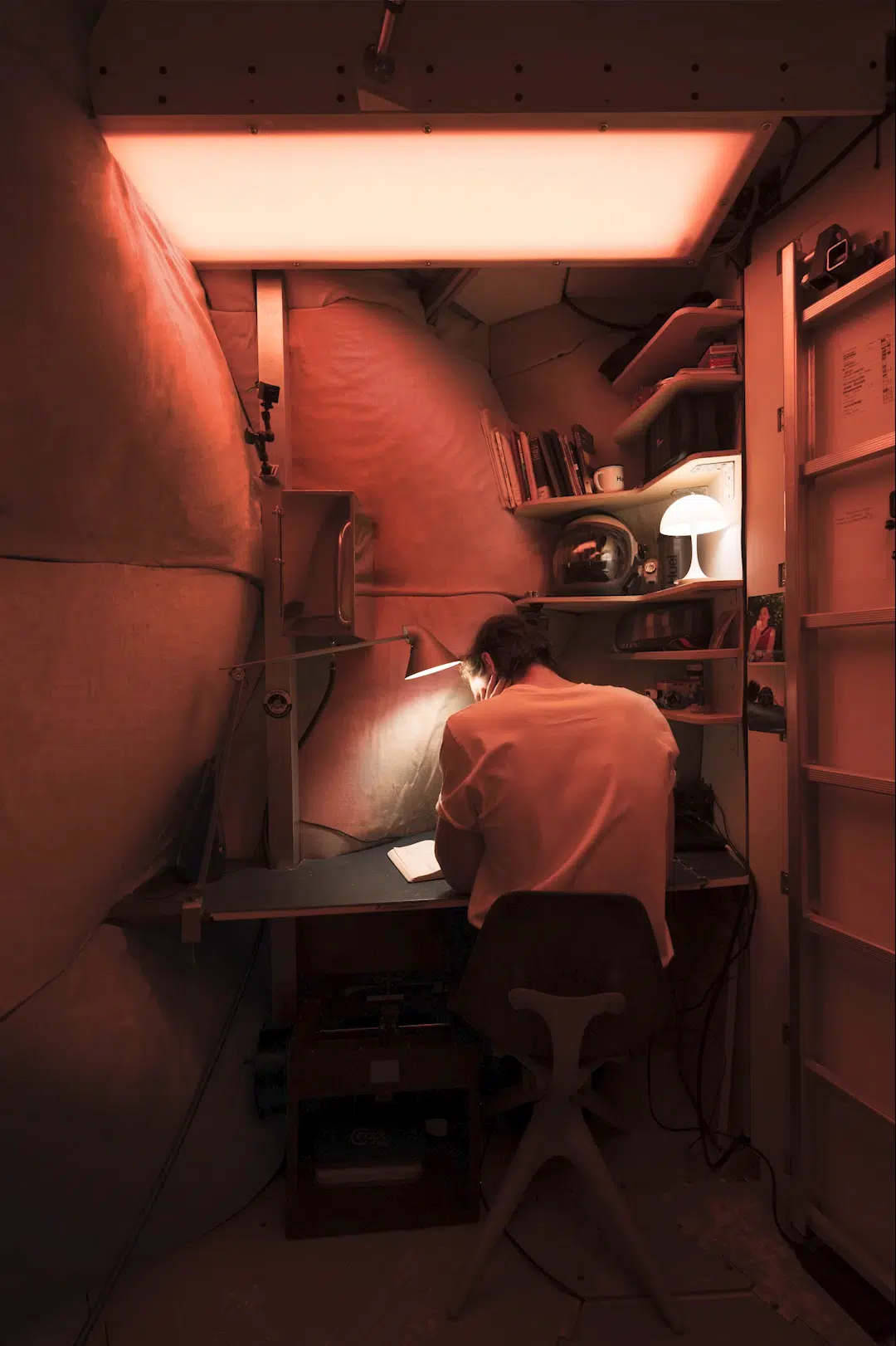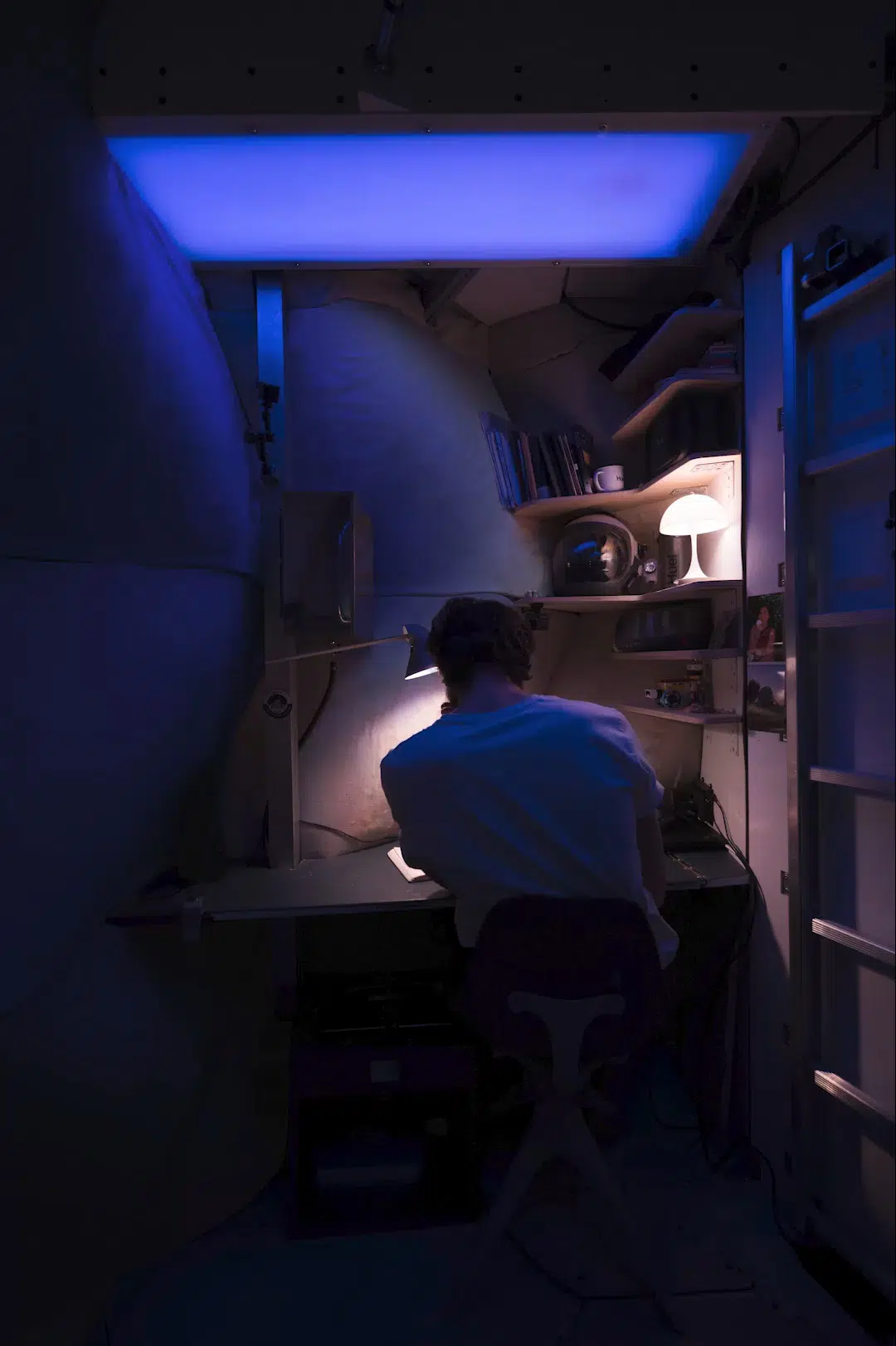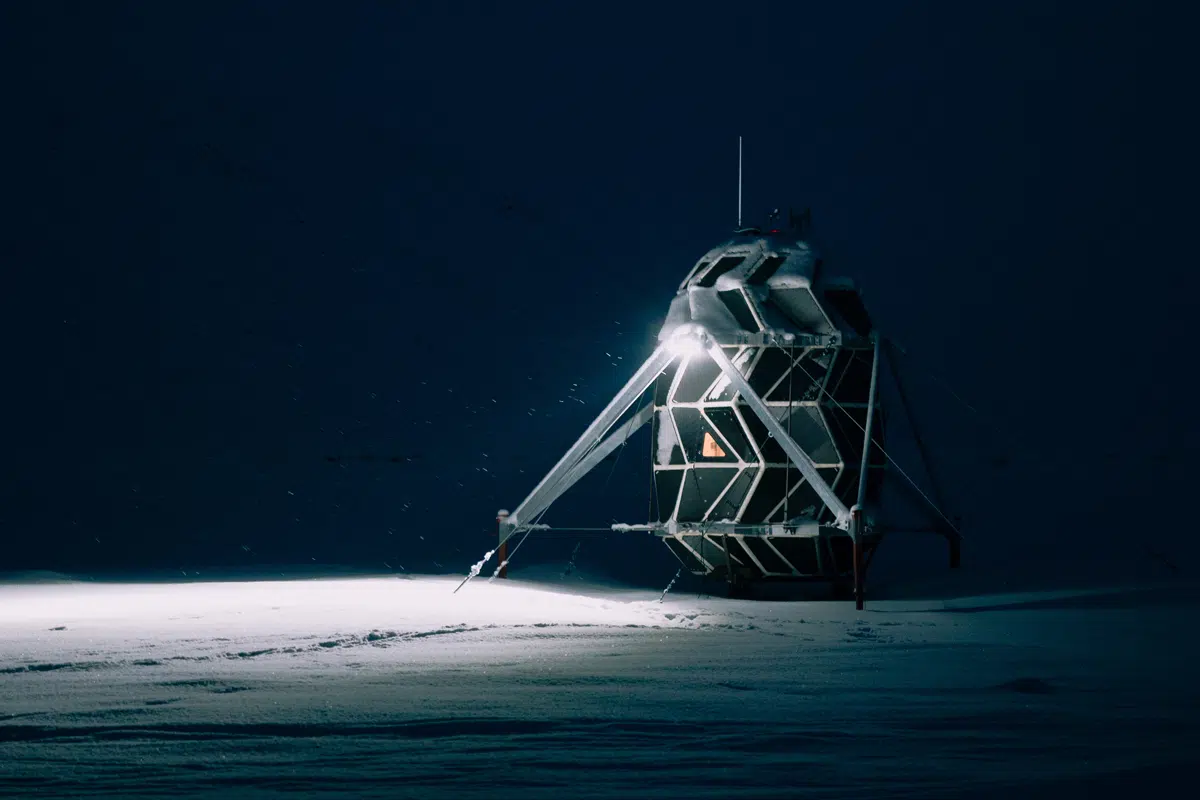
Photo: SAGA Space Architects
A Space Saga
Exhibition
February 12, 2022–
February 19, 2023
What does it mean to build a habitat for a place other than Earth? The most basic elements on Earth such as air, stable temperature, water and food are not available, and must therefore be considered in the design of a lunar base.
Since 2018, SAGA Space Architects has been working on the development of the lunar habitat, LUNARK. In 2020, LUNARK was tested during a 60-day mission in North Greenland, where space architects Sebastian Aristotelis and Karl-Johan Sørensen placed the habitat to live there.
In collaboration with researchers, the project has investigated the psychological effects associated with isolation. After the test mission, the habitat was left in North Greenland. In the summer of 2021, when conditions were less harsh, the habitat was brought home, repaired, and is now exhibited in Danish Architecture Center.
Reviews
★★★★★ Berlingske
♥♥♥♥ Politiken
Explore the exhibition


A smart construction
The LUNARK habitat is designed to be compact during transport, but spacious when the astronauts move in. When it unfolds after landing, it increases its volume by 750%. The design is inspired by the Japanese origami tradition.
Well-being in space
The conditions in outer space are extreme and dramatically different from here on Earth. To add variation to everyday life in space, SAGA developed circadian light panels to simulate the passing of time using light and colors. With this technology on the LUNARK expedition, Karl-Johan and Sebastian woke up to colorful artificial sunrises inside the habitat and went to bed after sunset. The light panels were the element that had the biggest positive effect on their well-being during the Greenland expedition.
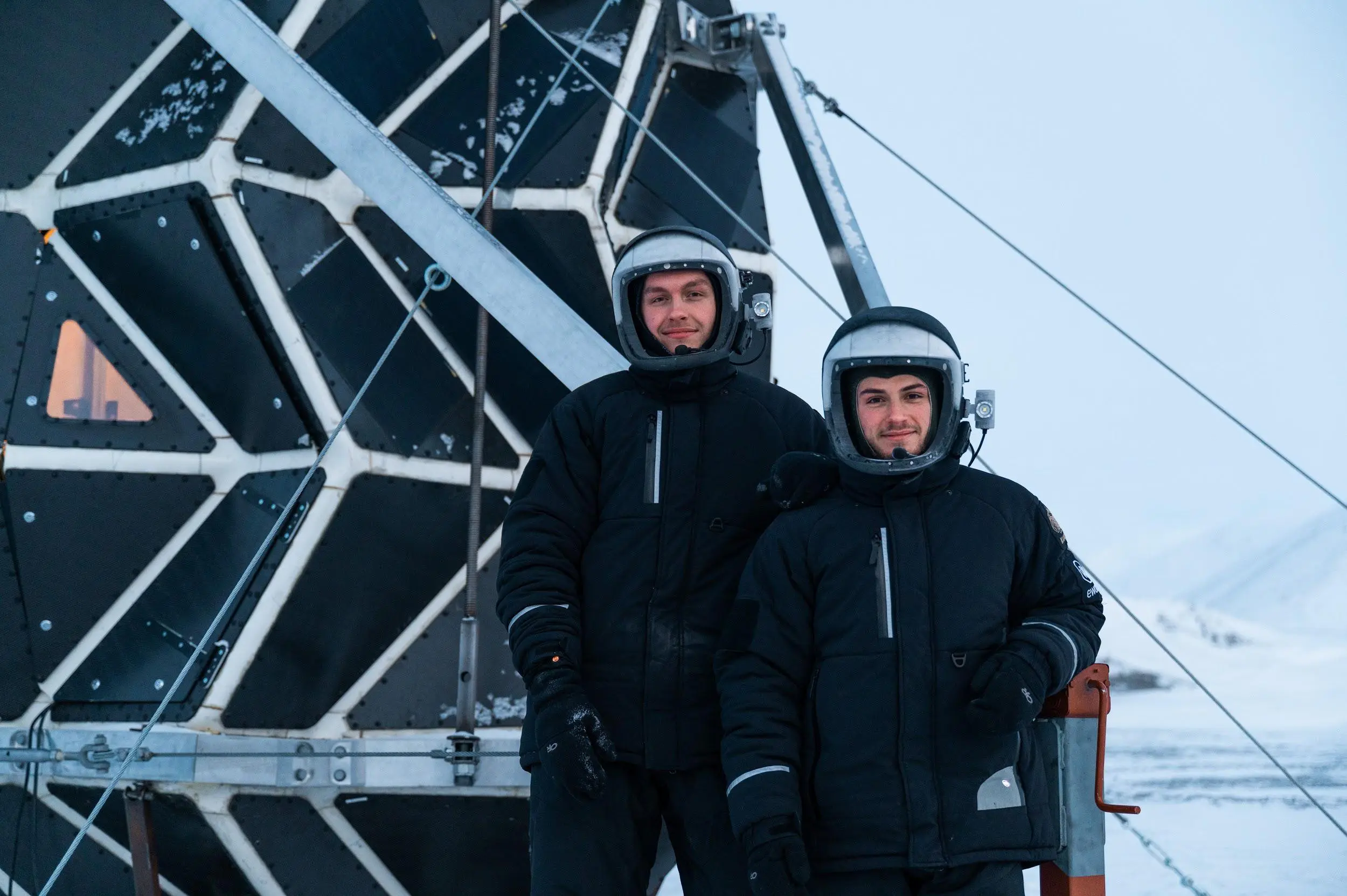
Are you curious about the expedition?
Do you want to know more about the expedition to Greenland, you can watch the documentary series about Sebastian and Karl-Johan’s 60 days in the lunar habitat on DRTV (in Danish).


